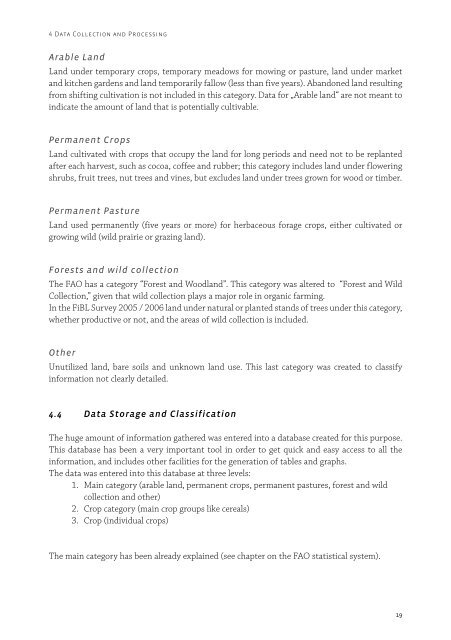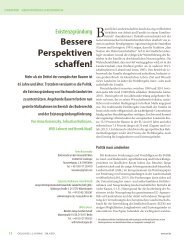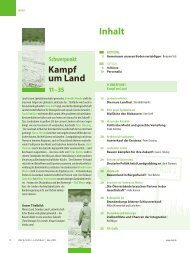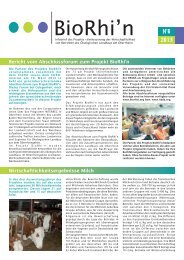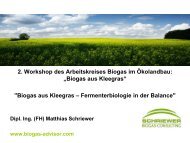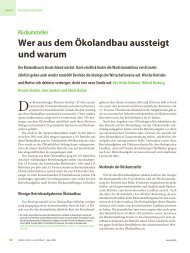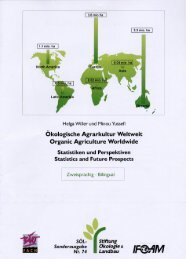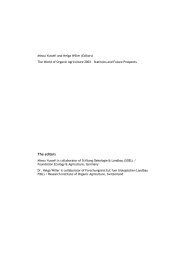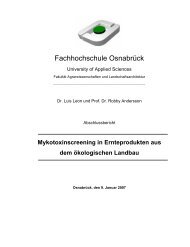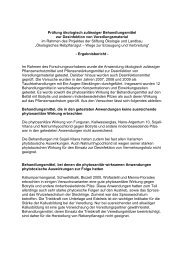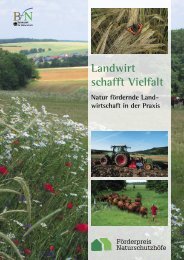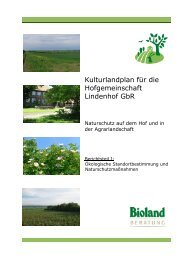the world of organic agriculture - Organic Eprints
the world of organic agriculture - Organic Eprints
the world of organic agriculture - Organic Eprints
You also want an ePaper? Increase the reach of your titles
YUMPU automatically turns print PDFs into web optimized ePapers that Google loves.
4 Data Collection and Processing<br />
Arable Land<br />
Land under temporary crops, temporary meadows for mowing or pasture, land under market<br />
and kitchen gardens and land temporarily fallow (less than five years). Abandoned land resulting<br />
from shifting cultivation is not included in this category. Data for „Arable land“ are not meant to<br />
indicate <strong>the</strong> amount <strong>of</strong> land that is potentially cultivable.<br />
Permanent Crops<br />
Land cultivated with crops that occupy <strong>the</strong> land for long periods and need not to be replanted<br />
after each harvest, such as cocoa, c<strong>of</strong>fee and rubber; this category includes land under flowering<br />
shrubs, fruit trees, nut trees and vines, but excludes land under trees grown for wood or timber.<br />
Permanent Pasture<br />
Land used permanently (five years or more) for herbaceous forage crops, ei<strong>the</strong>r cultivated or<br />
growing wild (wild prairie or grazing land).<br />
Forests and wild collection<br />
The FAO has a category “Forest and Woodland”. This category was altered to “Forest and Wild<br />
Collection,” given that wild collection plays a major role in <strong>organic</strong> farming.<br />
In <strong>the</strong> FiBL Survey 2005 / 2006 land under natural or planted stands <strong>of</strong> trees under this category,<br />
whe<strong>the</strong>r productive or not, and <strong>the</strong> areas <strong>of</strong> wild collection is included.<br />
O<strong>the</strong>r<br />
Unutilized land, bare soils and unknown land use. This last category was created to classify<br />
information not clearly detailed.<br />
4.4 Data Storage and Classification<br />
The huge amount <strong>of</strong> information ga<strong>the</strong>red was entered into a database created for this purpose.<br />
This database has been a very important tool in order to get quick and easy access to all <strong>the</strong><br />
information, and includes o<strong>the</strong>r facilities for <strong>the</strong> generation <strong>of</strong> tables and graphs.<br />
The data was entered into this database at three levels:<br />
1. Main category (arable land, permanent crops, permanent pastures, forest and wild<br />
collection and o<strong>the</strong>r)<br />
2. Crop category (main crop groups like cereals)<br />
3. Crop (individual crops)<br />
The main category has been already explained (see chapter on <strong>the</strong> FAO statistical system).<br />
19


